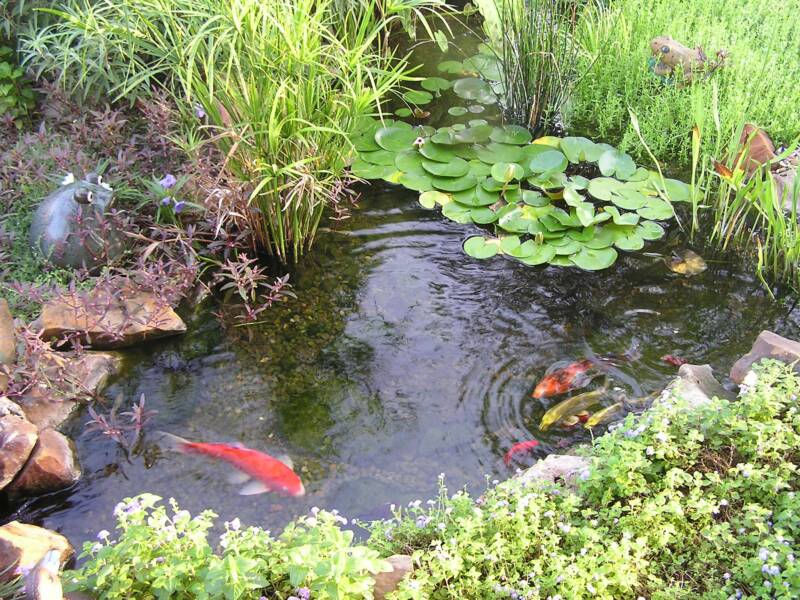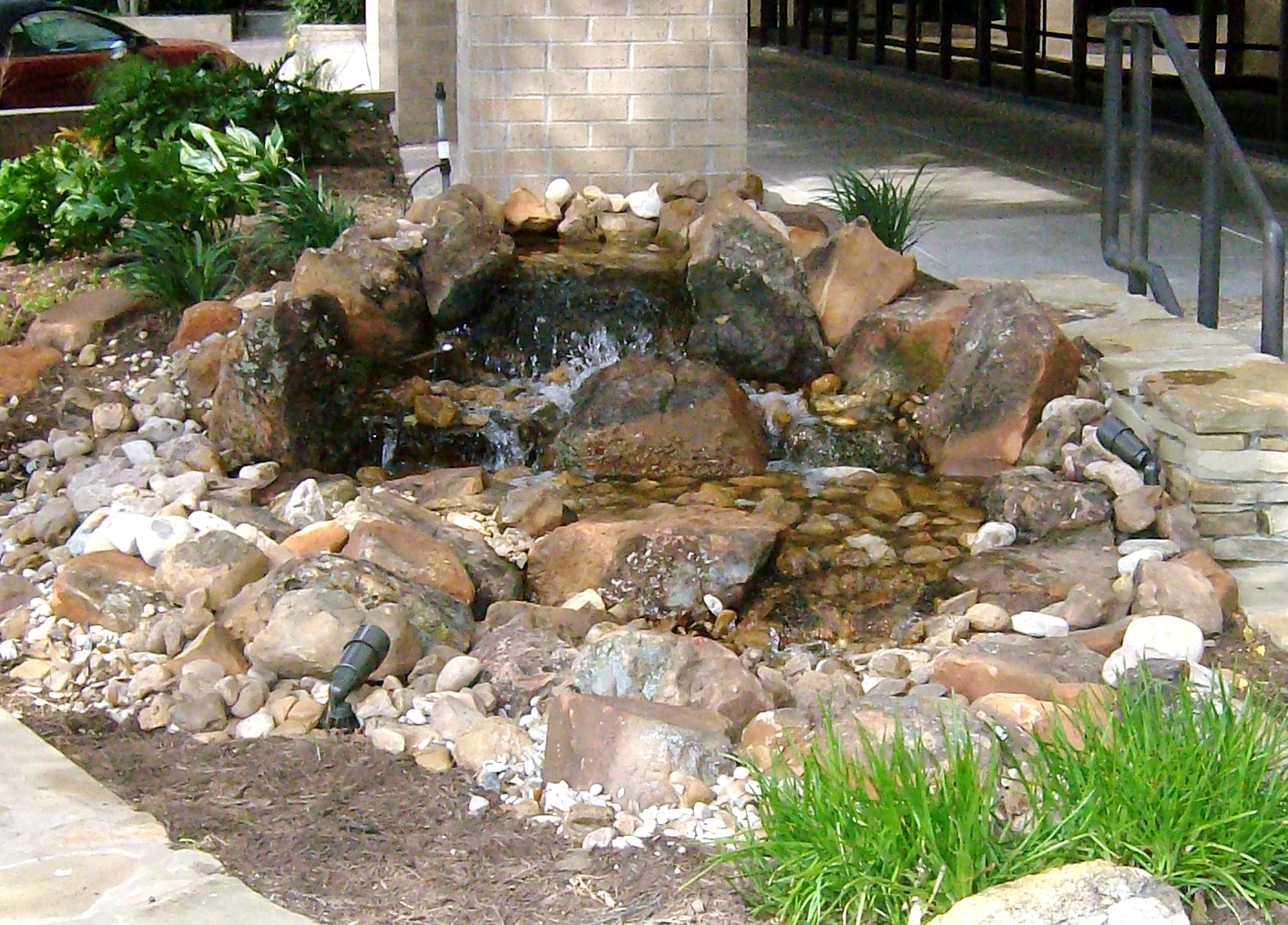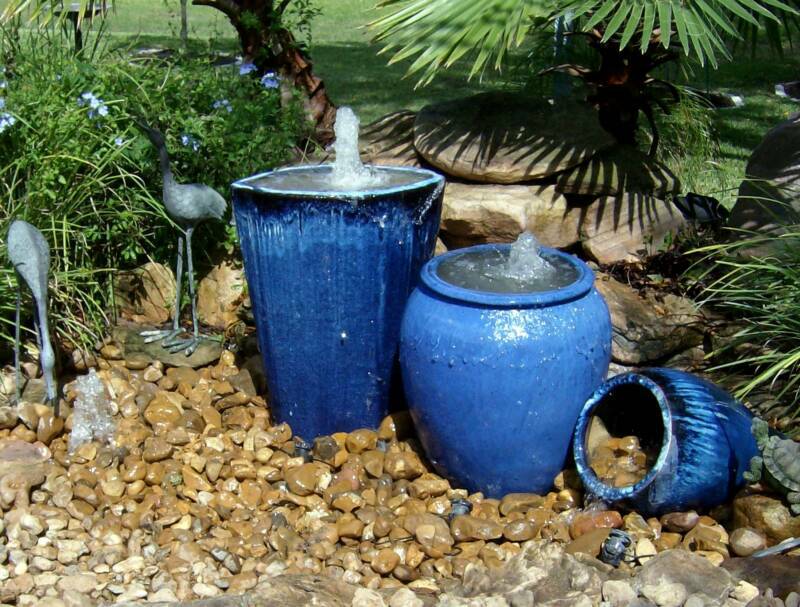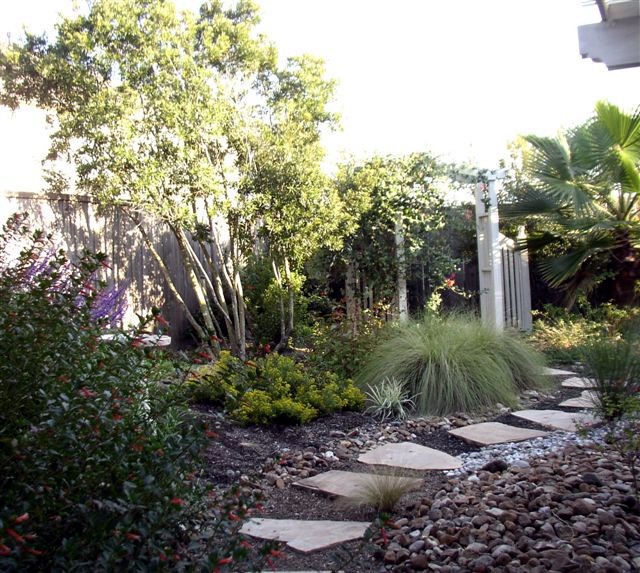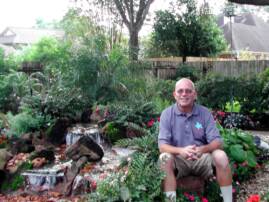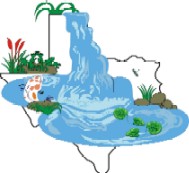


Rainwater Harvesting
Organic Ecosystem Ponds
Pondless Waterfalls
Urn and Fountain Features
Water-Wise Landscapes
Meet Your Water Feature Professionals


Texas Ponds and
Water Features
Pond for Kids
(part two)
by Matt Boring
The Natural Water Gardener
A living breathing ecosystem pond makes a great teaching school for students of all ages and grade levels, providing raw information to biology and aquatic sciences classes and inspiration for creative writing, poetry, even art classes. Many schools are able to afford to have them professionally installed or can work them into an upcoming landscape improvement budget. But for some schools this is not an option. They are basically at the point where they do it themselves or it doesn't get done. But doing it wrong will lead to an unfiltered or under-filtered pond with little educational value. The water may turn green and stinky and this surely will not end up being something the students have a lot of pride about.
A water garden based on the principles of a balanced ecosystem, however, will become a valuable educational tool as well as a clear, clean, and healthy environment for aquatic plants, fish, and all the other critters that will show up to fill in the rest of the ecosystem. This is something the students will be proud of creating as well as leaving for the future classes that come up through their school. It will also be a valuable learning asset as well a relaxing place for both students and faculty to enjoy. It will impress visitors to the campus, even more so when they find out that the students built it with their own hands.
The North American Water Garden Society, a non-profit organization of pond lovers dedicated to the enjoyment, education, promotion and protection of the water gardening hobby, sponsors the 'Ponds for Kids' program. Ponds for Kids is just one facet of NAWGS, but one that is critical to introducing to and educating the next generation about the environment around them through the study of an aquatic ecosystem right on school property. The Ponds for Kids program aims to connect schools with professional pond installers in their area that can help guide their students through a one-day pond building event wither for free or for a drastically reduced fee. The school is responsible for buying the materials and the money for this can be raised with fund-raisers conducted through the school or PTA.
Most of us installers cannot commit to doing more than one or two of these events for free each year, so will offer to do others at a reduced fee. I personally am committed to helping lead two such events each year. However, since I feel that these ponds can be such a strong tool in teaching environmental studies to kids who might not otherwise learn them in such a hands-on manner, I will lead as many of these events each year as I can fit into my schedule, all for a fee that is drastically reduced from what I would charge to lead my own crew through an installation in a customer's yard.
Why do I feel so strongly about this program? Well, whether living in a small town or a concrete-filled urban center, all kids need and deserve a chance to interact with the natural world. Ponds for Kids brings that opportunity right into the schools with a program that's dedicated to instilling a love for the environment. A sustainable, interactive ecosystem is the perfect atmosphere to cut across the disciplines in today's classroom.
Science classes could immediately begin studying the formation of the aquatic ecosystem in the pond they created. At first the pond will have nothing more that what was installed in it by the kids. But soon, dragonflies, water striders, and other insects will show up to lay their eggs in the water. Dragonflies live part of their lives in the water as nymphs before crawling up onto a cattail, Iris, or other tall plant. Their skin splits open down the back and their glistening wings unfold for the first time. They've been a mottled brown color their whole lives to help them hide from predators, but now they emerge with beautiful colors shining for the first time in the sun. I've seen more different colors on dragonflies since I entered this profession than I ever knew existed. The bright red ones were the most surprising to me, but all of them are beautiful whether they be light purple, black and white, or they have green heads and bright blue bodies.
Frogs and toads will show up to mate and lay their eggs in the pond. Frogs live their whole lives in and around the water, but toads seem to show up to mate and lay eggs, then retreat back into the yards and gardens nearby to continue feasting on insects in other parts of your property. That's free and organic insect control. Toad eggs are noticeable as little black dots in what appears to be long strings of clear jelly. Frogs lay their eggs in a mass of this clear jelly and will attach this glob to the underwater part of an aquatic plant. Either way, the students can follow the development of these little croakers from egg to tadpole and on into the adult stage of their lives.
But the pond's educational value is not limited to science classes. Language arts classes can use the pond as inspiration for creative writing and poetry assignments. A group of kids could be challenged to each come up with a haiku about what they see at the water garden. Some may write about the fish, some about the waterfall, and some about the water lilies. Each person would come up with something different based on where their attention was drawn. They could each be asked to come up with 10 adjectives and 10 adverbs to describe what they see. Surely some words would match on each student's list, but the ones that don't show up on the other student's lists would give a little insight into each personality.
Social studies classes could study man's effect on the environment around us. I recently had a call from a customer whose 13 year old son had caught some perch from the creek and decided to add them to his family's pond. Within minutes, the perch were attacking and killing the goldfish. So the perch were removed. The mother was distraught, but I told her that she can use this experience to teach her son about what happens when man introduces a foreign species into an ecosystem. I read recently that there are over 50,000 foreign species in the United States alone. Some find a place in our environment and settle into a balance, but others like the snakehead fish or the Kudzu vine seem to know no limits and through their voracious nature, soon take over the area they're in, killing off native species as they spread.
Of course, any art teacher would be able to find creative ways to incorporate a beautiful water garden into their curriculum. Sketching, drawing, painting, water colors, or just about any media could be used to capture each artists' impressions of what they see. The brightly-colored fish and blooming lilies and other plants are sure to capture the imaginations of the budding artists in the class and inspire their creativity. The sudden flash as a raindrop hits and immediately slides off of the waxy surface of an elephant ear or lotus pad is magical and would be challenging to capture in a drawing.
Besides being an innovative place in which the students can learn, the pond and surrounding gardens can be a relaxing place for kids to study or to calm down before a big exam. Sports teams may congregate in this area to gather their thoughts and focus before an important game. Even teachers and faculty will use this area to relax and unwind during the day. And no campus tour would be complete without taking the visitor by this beautiful teaching tool, built with the hands of the students who will benefit from it.
If you're in Texas and are interested in having me put on a Ponds For Kids event for your school or your children's school, please contact me directly through my website www.TexasPonds.com If you're in another state and need to find out more about the program or want to find a contractor in your area to work with, please visit www.NAWGS.org and click the 'Ponds for Kids' link. I'll be leading one of these events in January and will write about it and show you some pictures in an upcoming article. But until next time...........................................
Happy Pondering!

